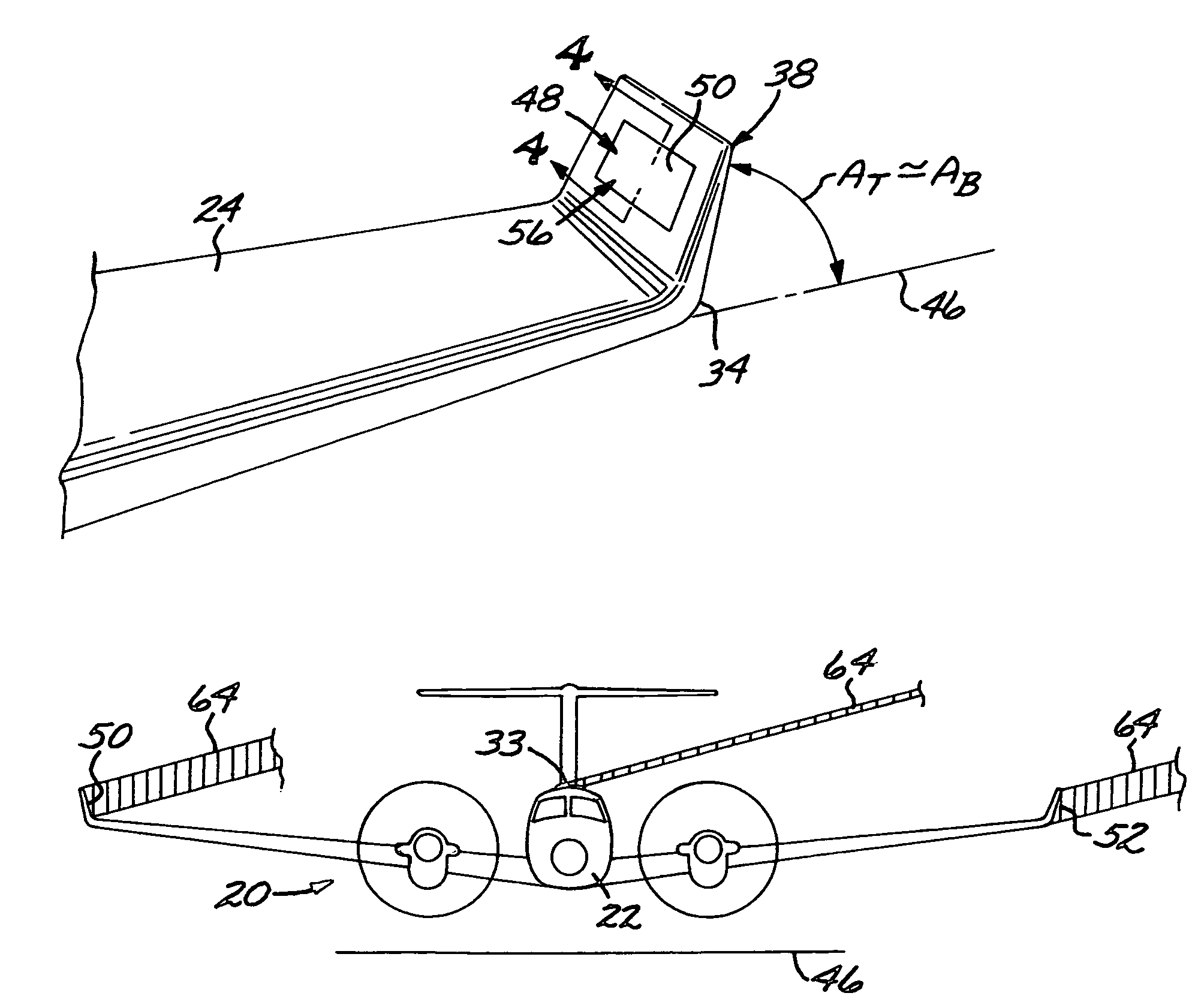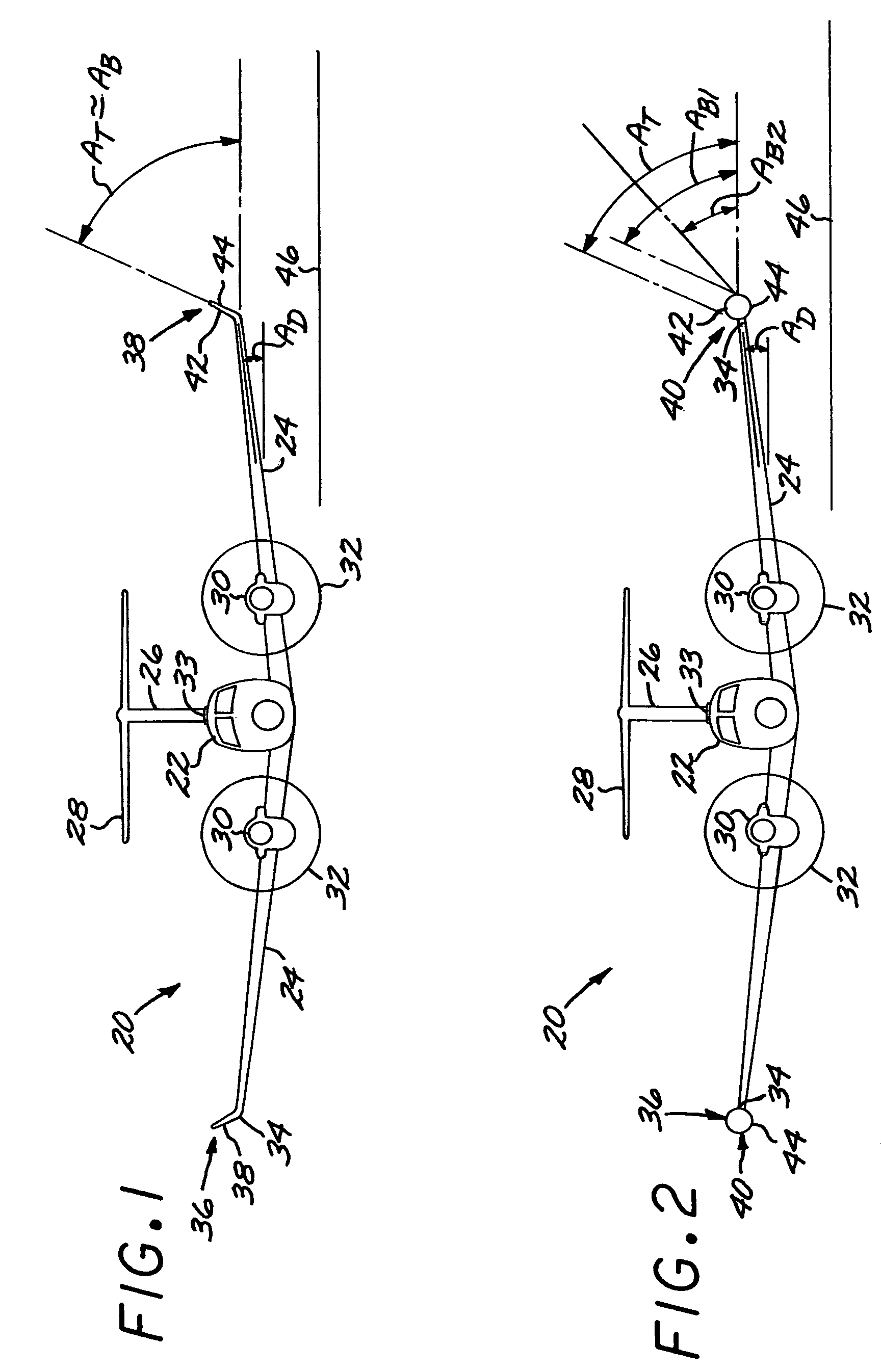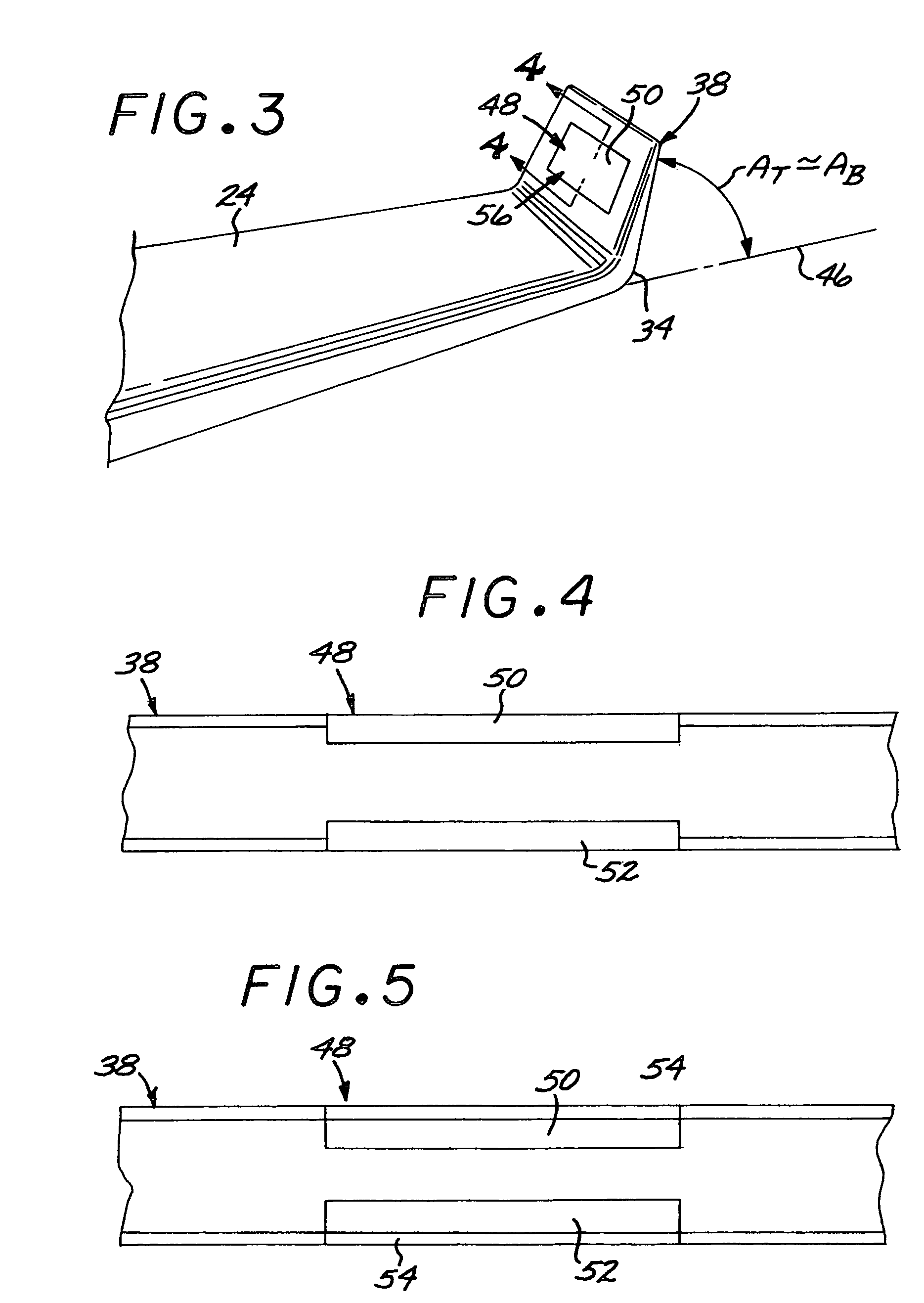Aircraft with antennas mounted on the tops and bottoms of aerodynamic-surface extensions
a technology of aerodynamic extension and antenna, which is applied in the direction of airflow influencers, fuselages, transportation and packaging, etc., can solve the problems of difficult geometric problems, heavy weight, and inability to maintain a robust uninterrupted communications link between an aircraft in flight and a geosynchronous/geostationary satelli
- Summary
- Abstract
- Description
- Claims
- Application Information
AI Technical Summary
Benefits of technology
Problems solved by technology
Method used
Image
Examples
Embodiment Construction
[0038]Preferred embodiments of the approach of the present invention are used in conjunction with an aircraft such as the aircraft 20 illustrated in FIGS. 1-2. The illustrated aircraft 20 has a fuselage 22, at least one wing 24 that serves as an aerodynamic surface joined to the fuselage 22, a vertical tail 26, and horizontal stabilizers 28, which are joined to the vertical tail 26 in the depicted aircraft 20. The wing is oriented at a dihedral angle AD to a horizontal plane 46 when the aircraft 20 is in a level orientation. The horizontal plane 46 is a reference plane that is perpendicular to a radius of the earth passing through the aircraft 20, and thence is generally parallel to the local surface of the earth at the location of the aircraft. The wings of most aircraft have a small positive dihedral angle AD, although aircraft having zero or negative dihedral-angle wings are known.
[0039]As used herein, “fuselage” is broadly defined to be the area of the aircraft, usually lying al...
PUM
 Login to View More
Login to View More Abstract
Description
Claims
Application Information
 Login to View More
Login to View More - R&D
- Intellectual Property
- Life Sciences
- Materials
- Tech Scout
- Unparalleled Data Quality
- Higher Quality Content
- 60% Fewer Hallucinations
Browse by: Latest US Patents, China's latest patents, Technical Efficacy Thesaurus, Application Domain, Technology Topic, Popular Technical Reports.
© 2025 PatSnap. All rights reserved.Legal|Privacy policy|Modern Slavery Act Transparency Statement|Sitemap|About US| Contact US: help@patsnap.com



